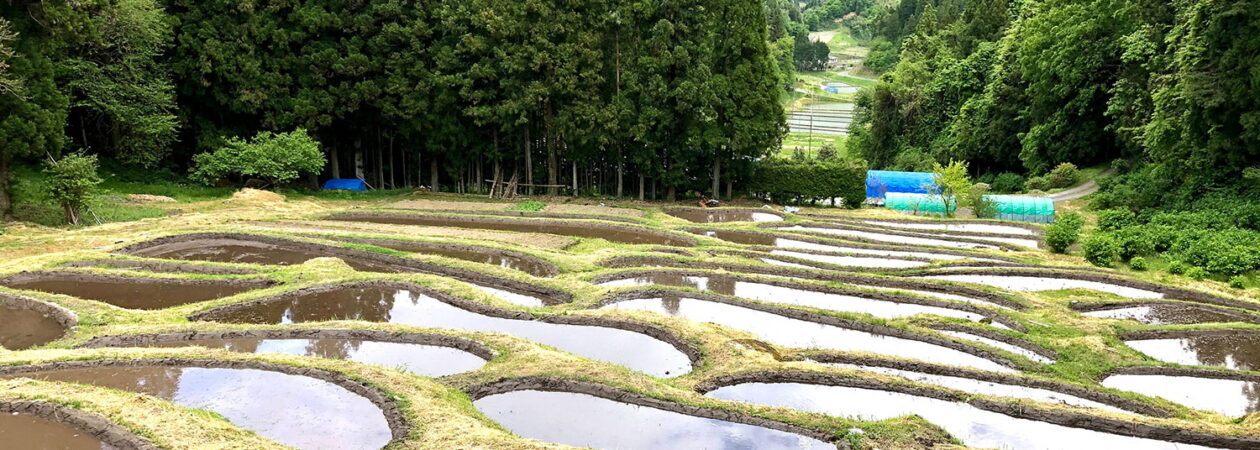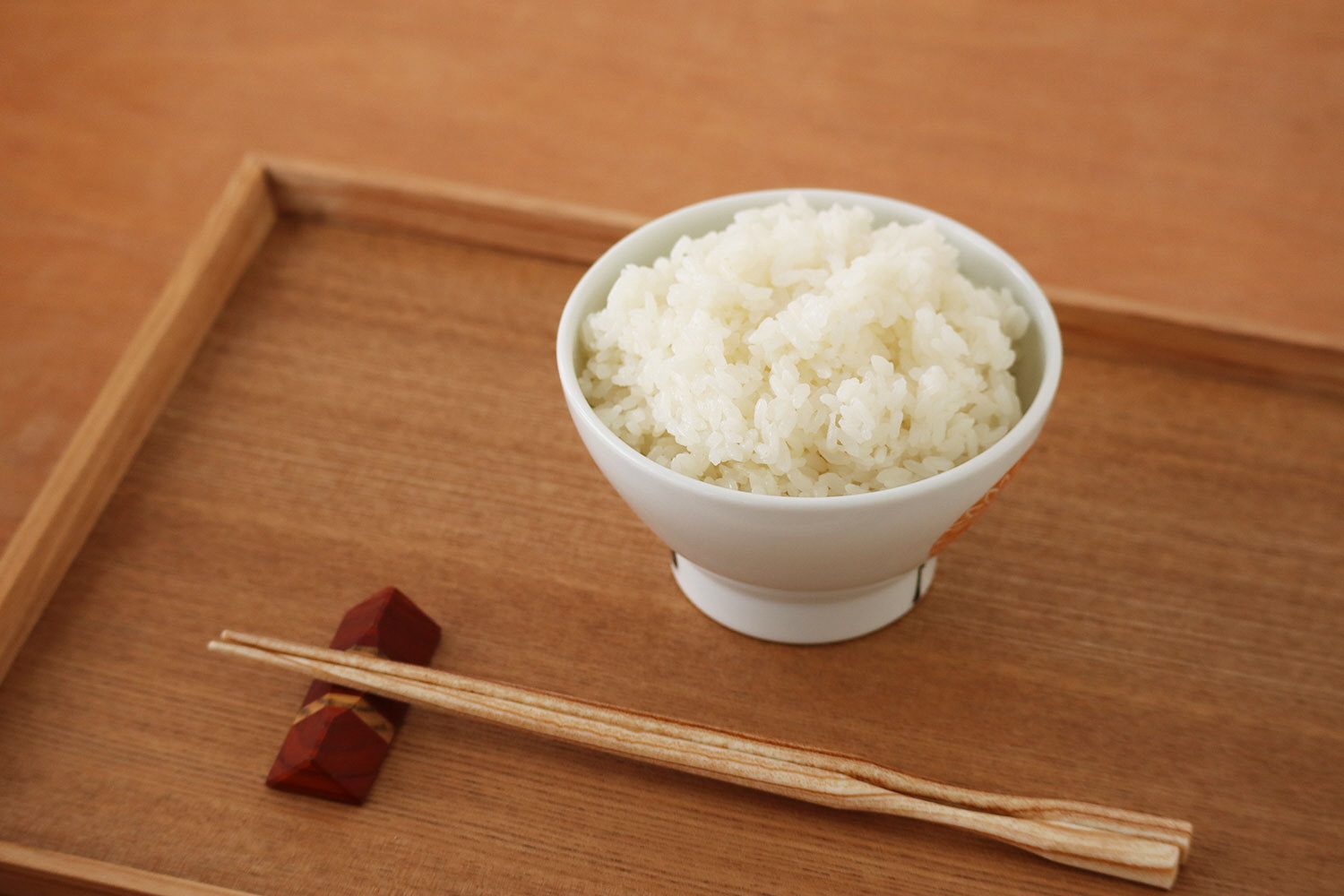
Let’s talk a little on the cultivation of rice. Ichinoseki City has a growing number of places where visitors can experience agriculture. One such place is ‘Playfarm’, an organization that invites anyone who’d like to share in the experience of traditional rice farming. This takes place at Kanayama Terraced Rice Fields, which has a history that dates back to the Edo period. Through this experience, those involved feel more appreciative of the staple food that they consume daily. If you’d like to help with the process, visit Kanayama Tanada Play Farm. Here are some of the steps involved.
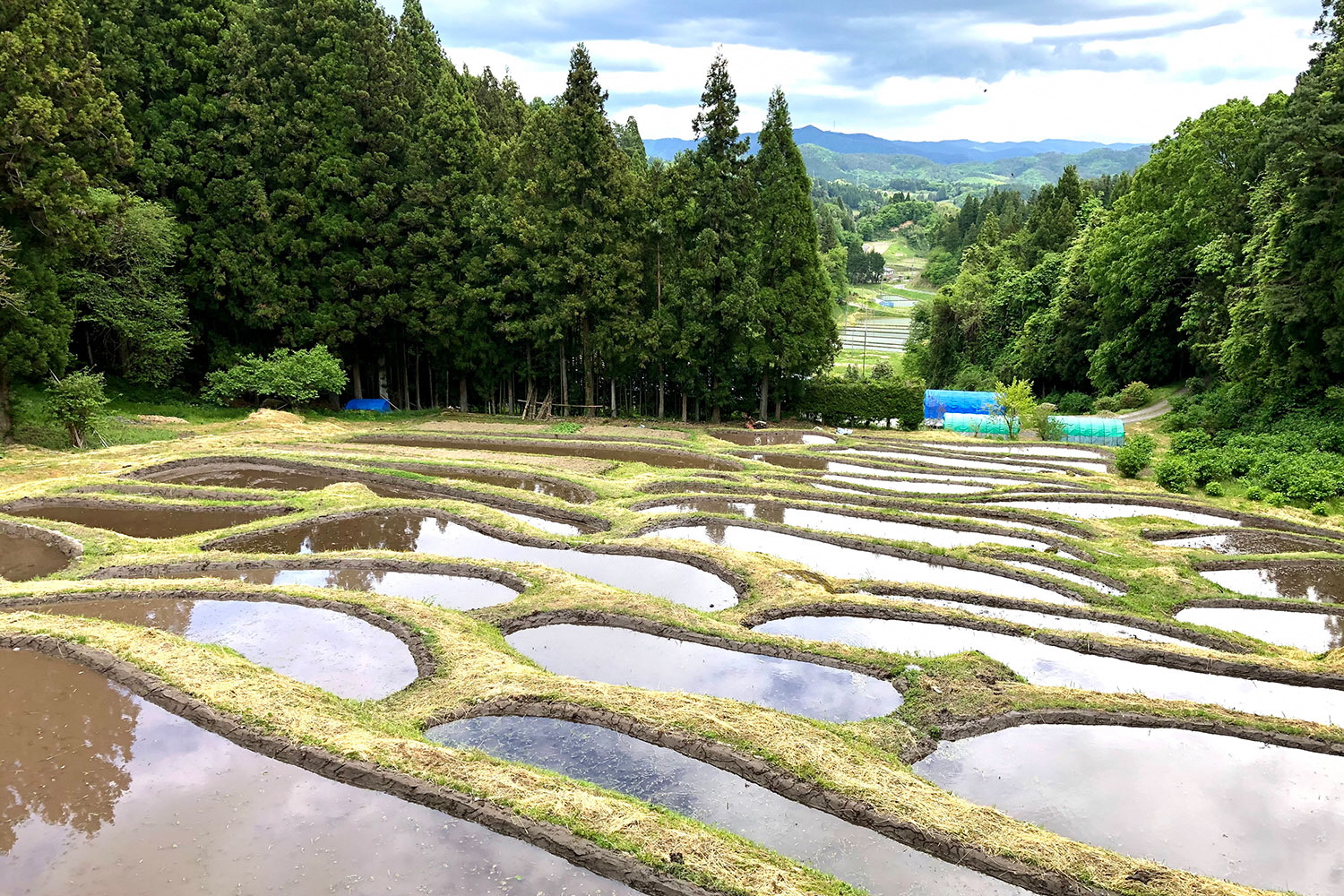
It is often said that rice requires 88 laborious steps.
This is because the kanji character for “rice” (米)contains the combination of 八十八 meaning 88. The process of rice cultivation requires a great deal of time and effort.
Starting with the rice paddy preparation in the spring, the farmer’s work of the year is condensed into the rice until it is harvested and eaten.
Rice planting in spring.
The first step in rice cultivation is tilling the soil in the rice paddies, which has hardened over the winter.
People would plow the soil by hoes or use horses and oxen, but nowadays, the soil is plowed by machine.
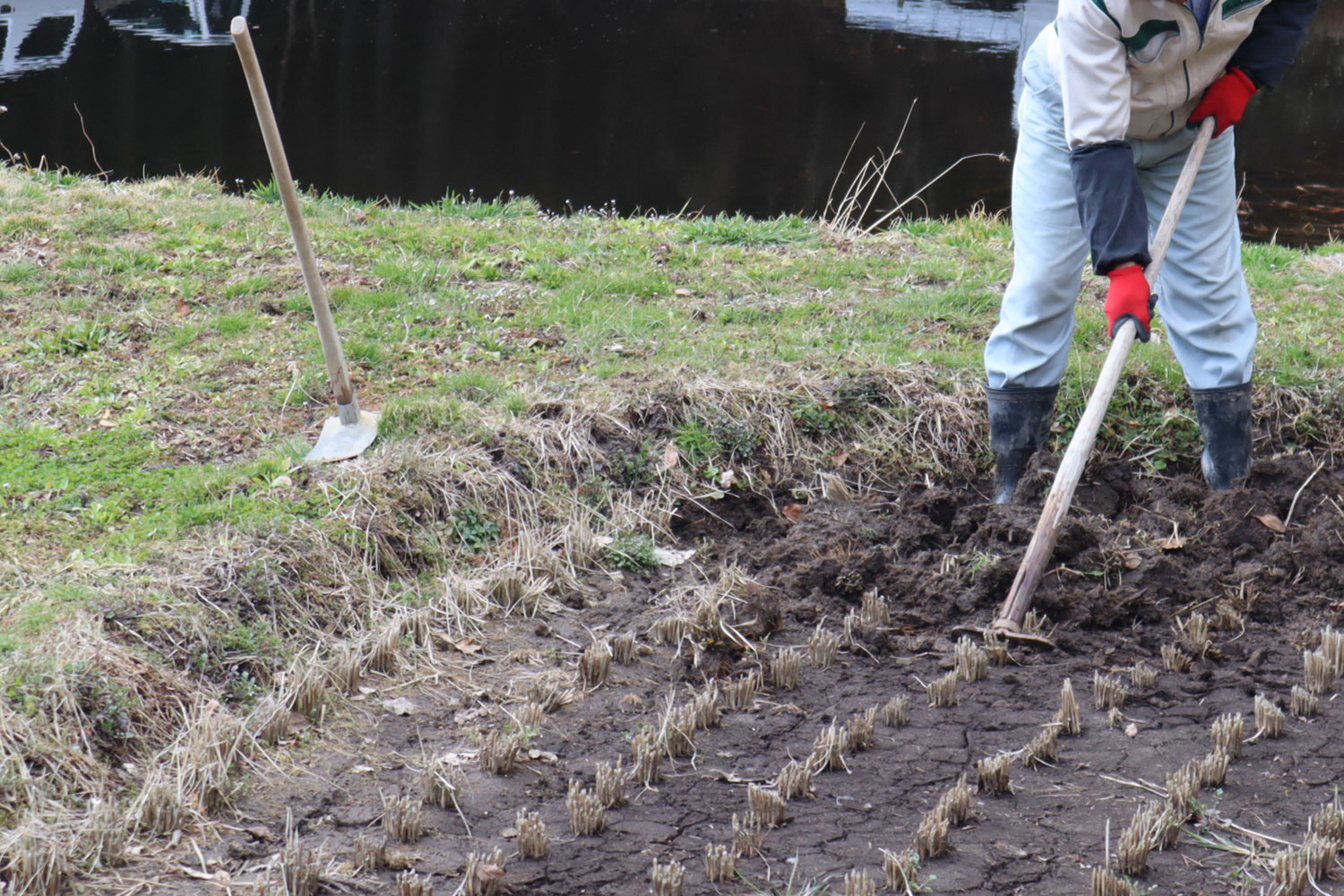
Along with the rice paddy preparation, seedling cultivation is also important.
If you can produce strong and fine seedlings, half of the rice production process is said to have been successful.
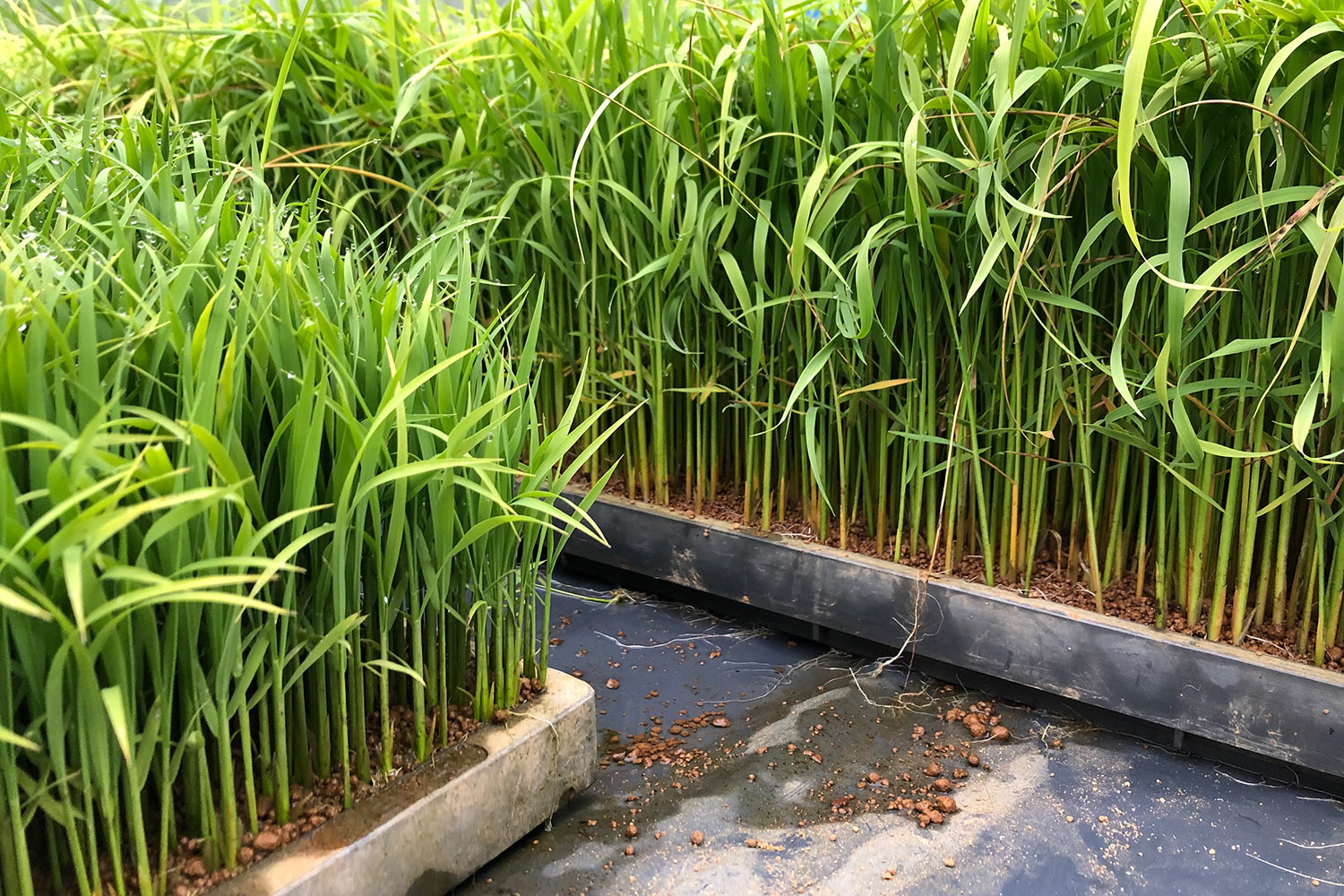
“Blackening” is the process of painting the edges of rice paddies to improve water retention in the paddies.
This work is also essential because the edges of rice paddies are often punctured by rodents and moles, causing water to leak out.
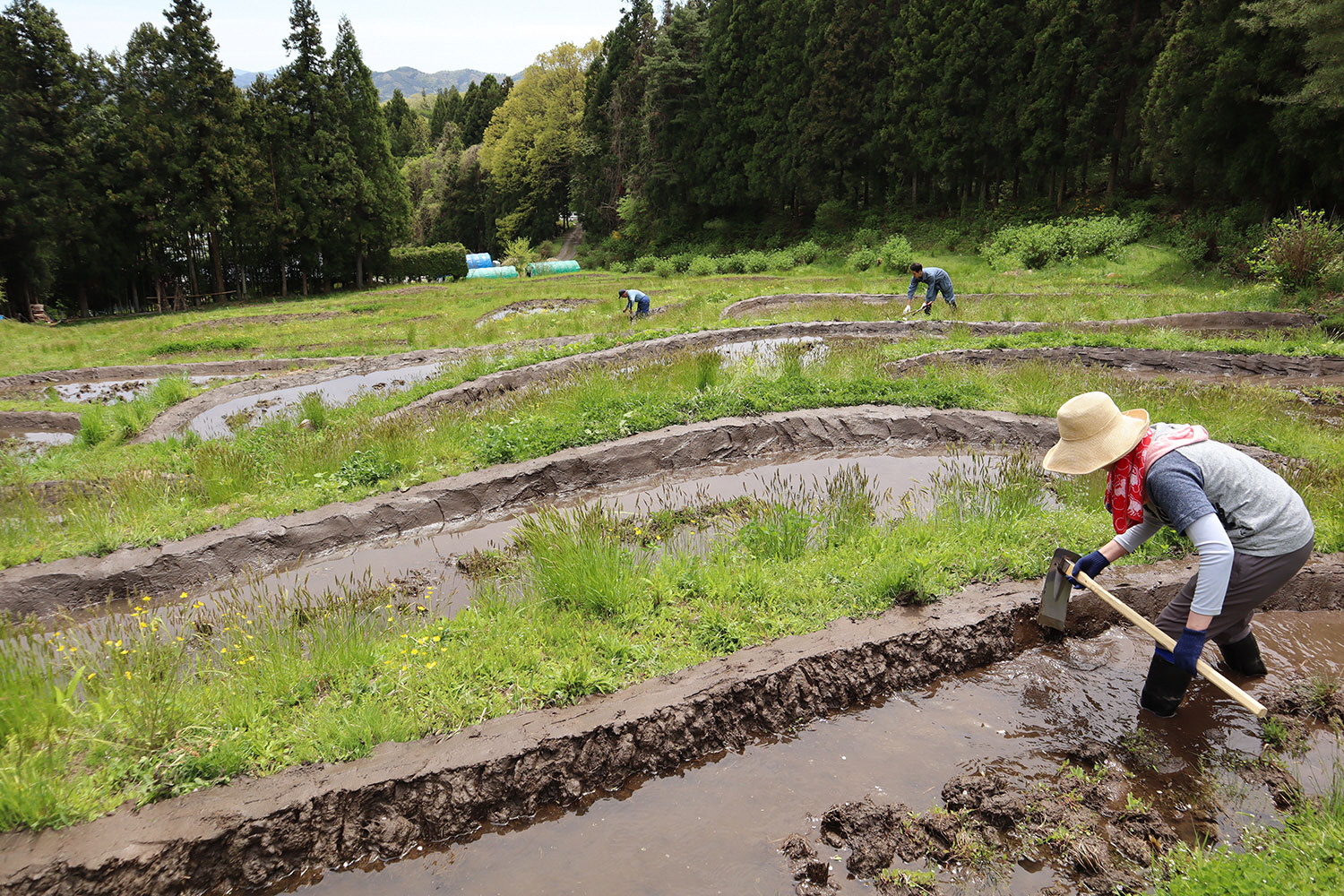
One week before rice planting, a process known as “shirokaki” is carried out.
Water is added to fill the rice paddies and the soil is stirred to make it muddy.
The purpose of this process is to prevent the growth of weeds and to soften the soil to make it easier to plant seedlings.
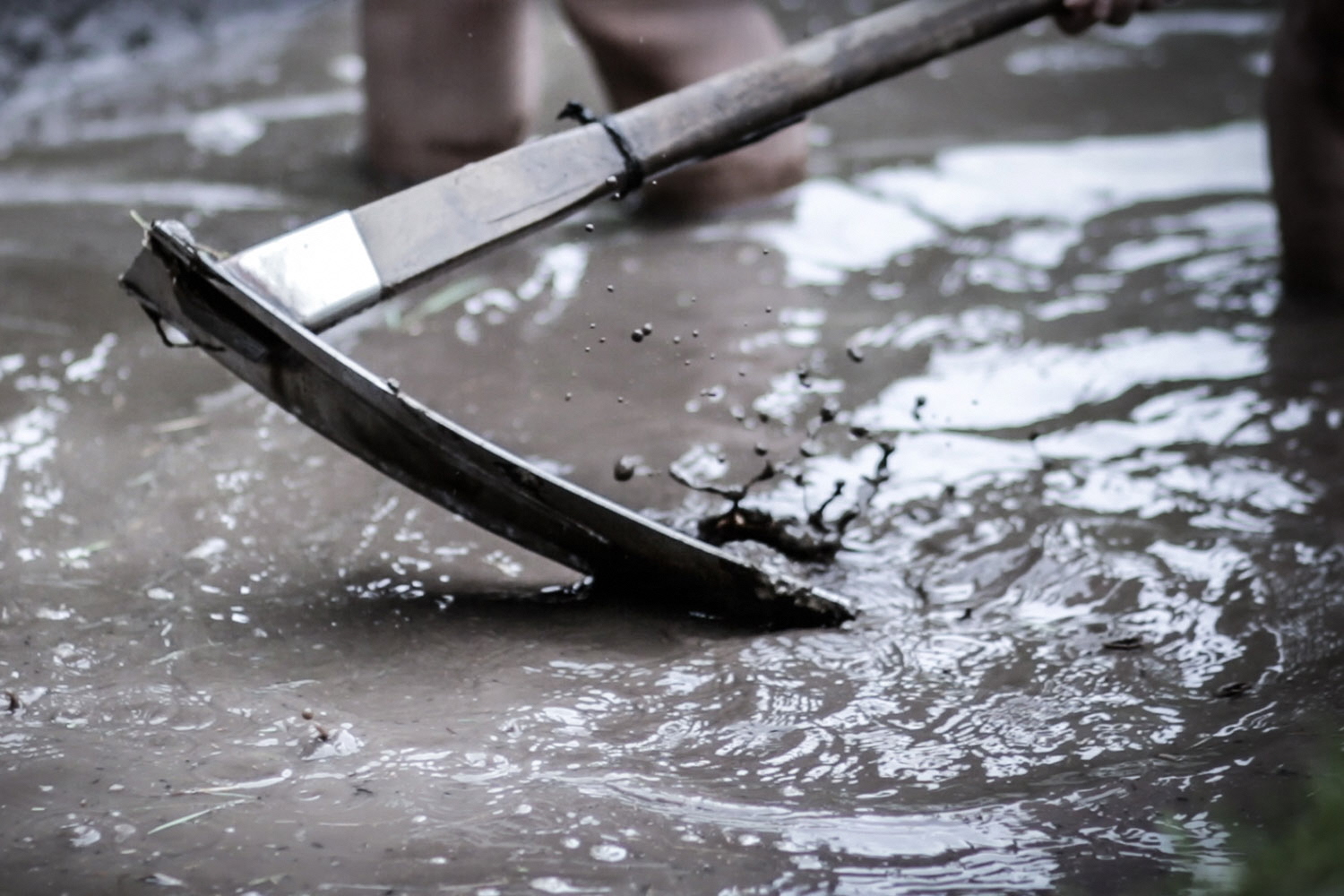
After the plowing is finished, it’s time to plant the rice.
The grown seedlings are planted in the rice paddies.
In the past, Japanese farmers planted rice by hand which was an arduous task. Fortunately, rice planting machines have made the procedure considerably easier in recent times.
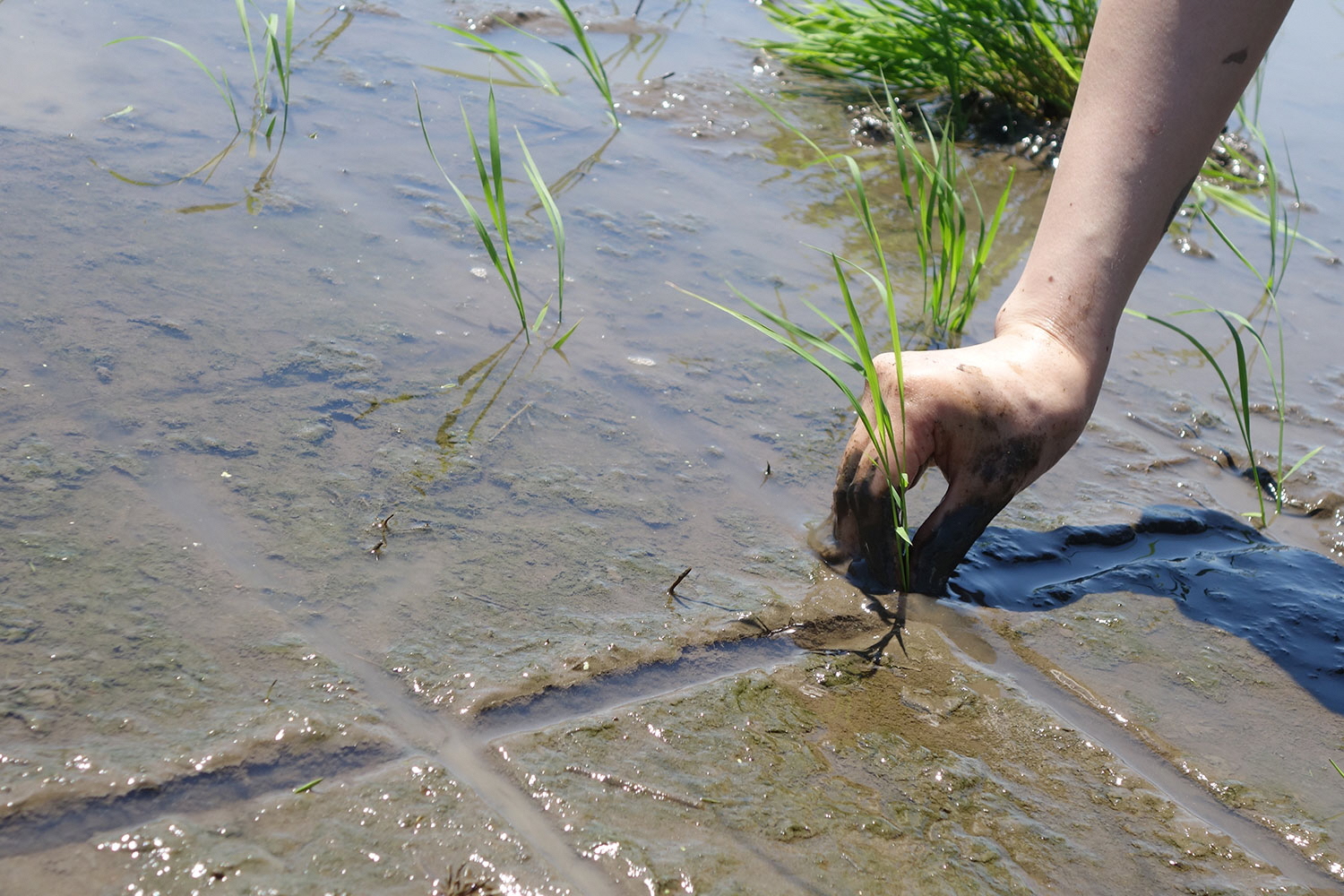
Water Management
Water management in rice paddies varies depending on the growth conditions of the rice plants.
It’s been long regarded as one of the most crucial responsibilities in rice growing because it needs to be controlled according to the climate and conditions. Immediately after rice planting, paddies are kept full to help the seedlings take root, and before harvesting, water is drained to strengthen the roots of the rice plants.
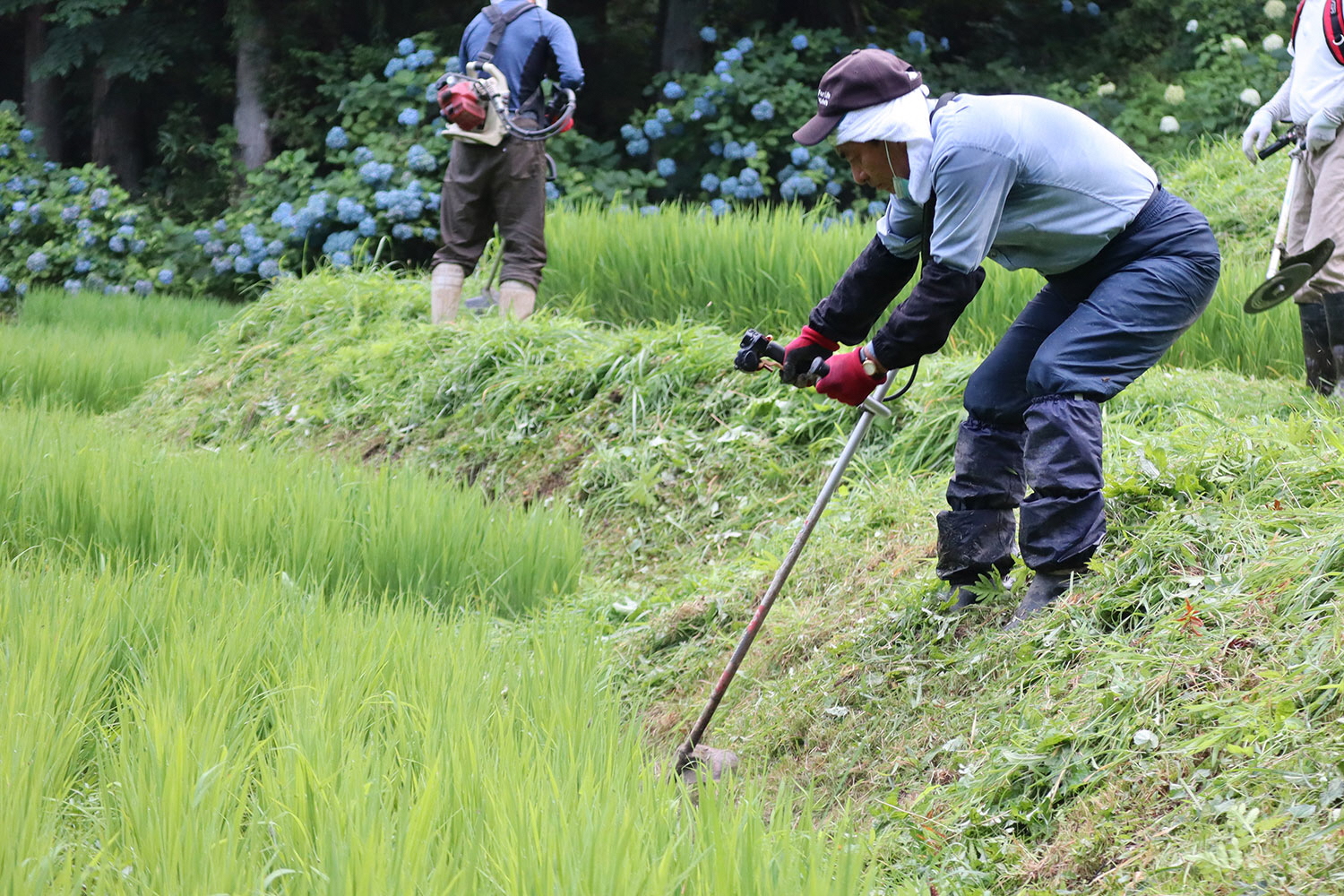 Mowing and Weeding
Mowing and Weeding
Weeds are the natural enemy of rice. In hot, humid Japan, weeds grow quickly.
To prevent them, it is important to weed the rice paddies and mow the footpaths between rice fields.
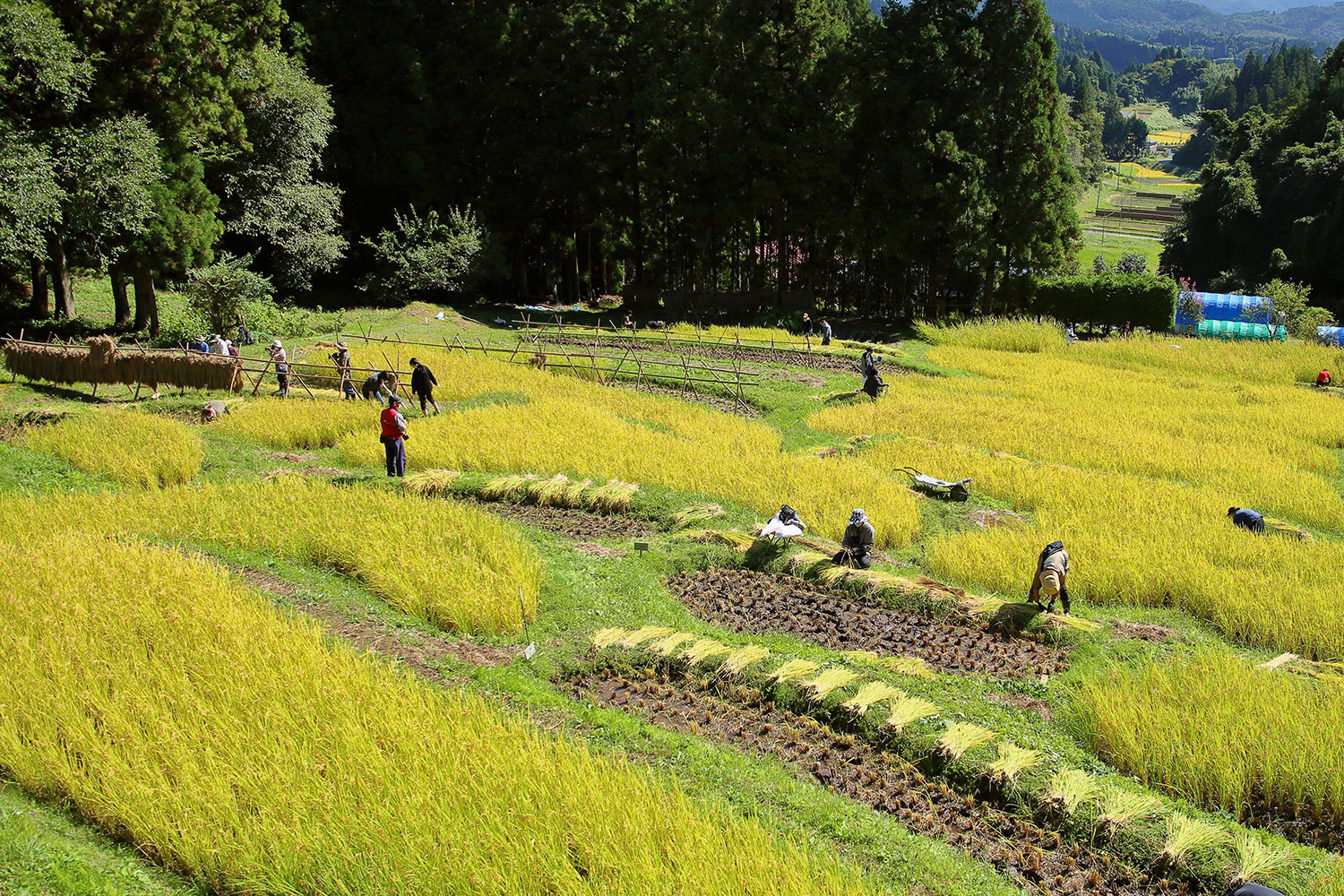 Threshing
Threshing
Threshing is the process of removing the rice from the tip of the ear.
After threshing is completed, the rice is hulled and polished, and is ready to be served as white rice for the first time. 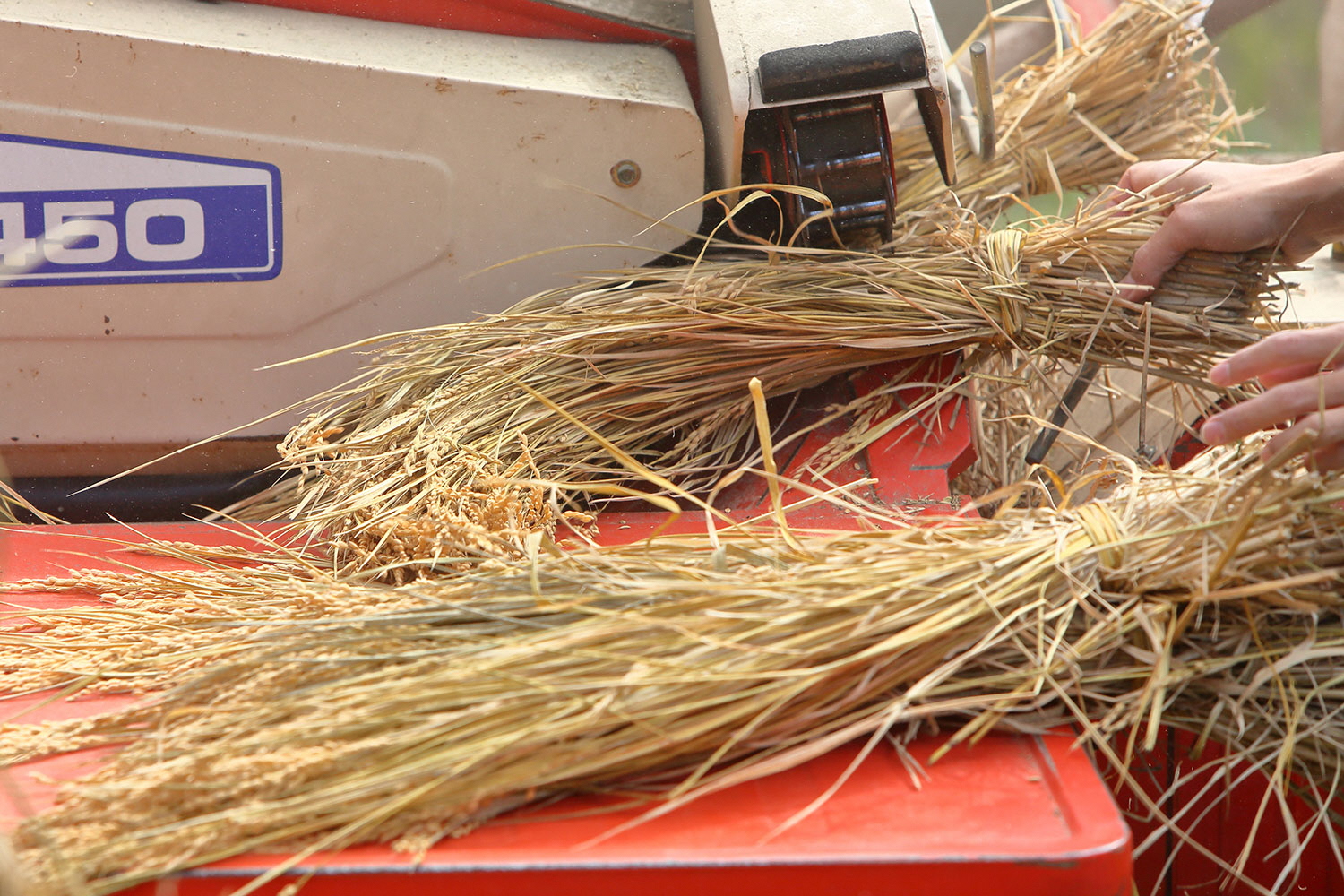
There are many other processes involved in rice production that are not introduced here. The rice that farmers grow with care is delicious and deserves to be savored.
In other rice news…
In January 2024, Ichinoseki City pledged to par-take in the Ministry of Agriculture, Fisheries and Farming Organic Village initiative based on the Green Food System Strategy. A plan to promote organic agriculture with high environmental conservation effects was established. Organic rice will be supplied to all elementary and junior high schools in Ichinoseki City three times in February 2024 for school lunches with a total supply of 2,300kg for 8,100 students and teachers.
Japanese
お米ができるまで(合同会社ハルノ企画 櫻井 陽氏 著)一関市では農業体験ができる場も広がってきています。江戸時代から続く金山棚田でお米づくりを行う団体playfarm(プレイファーム)では伝統を守るため、棚田での昔ながらの米作りを体験してみたい人たちを募り共同作業を行っています。この体験を通して、多くの参加者が毎日食べるお米への感謝の気持ちを深めています。
この体験に興味を持つ方は、金山棚田プレイファームを覗いてみてください。(英文に直リンクあり)
米の栽培方法について少し説明します。
よくお米は八十八の手間がかかっていると言われます。
「米」という漢字には「八十八」という文字の組み合わせが見られることからですが、実際の米作りの過程も、それほど手間暇がかかっています。
春の田おこしからはじまり、お米を収穫して食べるまで、農家さんの1年の仕事が凝縮しているのが、この「お米」です。
春の田おこし。
冬を越え、硬くなった田んぼの土を耕す作業です。
これがお米づくりの最初の仕事。
今は機械で土を耕しますが、昔は人が鍬で耕したり、馬や牛を使って耕したりしていました。
田おこしと合わせて大事なのが、苗づくり。
丈夫で立派な苗ができれば、お米作りの半分は成功したと言われます。
田んぼの水持ちを良くするために、田んぼの縁を塗り固める作業「黒塗り」。
田んぼの縁は、ネズミやモグラなどに穴を開けられ、水が漏れ出すことが多いので、この作業も欠かせません。
田植えの1週間前には、代かきという作業をします。
田んぼいっぱいに水を入れ、土をかき混ぜ、泥状にしていきます。
その後の雑草が生えないようにするのと、土を軟らかくして苗を植えやすくする目的があります。
代かきが終わると、いよいよ田植えです。
成長した苗を田んぼに植えていきます。
昔の日本では手植えで行っていたため重労働でしたが、今は田植え機で行うのでかなり作業が楽になりました。
水の管理
田んぼの水管理は、稲の生育状況によって変わっていきます。
気候や状況に合わせての管理が必要なことから、昔から米作りの中でも大切な作業と位置付けられてきました。田植え直後は、水をいっぱいに保ち、苗が根を張るのを助け、稲刈り前は水を抜き、稲の根張りを強くします。
草刈り・草取り
稲の天敵は雑草です。高温多湿の日本では、雑草がすぐに生えてきます。
その雑草を防ぐには、田んぼの草取りと、畦の草刈りが大切です。
稲刈り
稲が黄金色に輝いてきたら、いよいよ稲刈りです。
鎌で刈り取った稲を、藁で束ねていき、棒や杭にかけ、自然乾燥させます。
脱穀
稲を穂先から籾を落とす作業が脱穀です。
脱穀が終わり、籾摺りと精米を行うことで、白米としてはじめて食卓に並びます。
これ以外にも紹介しきれない作業が、お米作りにはあります。
毎日農家さんが手塩にかけて作ったお米は美味しいですし、大切に食べたいですね。
他にお米に関するニュース
一関市は、環境保全効果の高い有機農業をより一層推進するため、2024年1月に「一関市オーガニックビレッジ宣言」を行いました。2024年2月には一関市内の全小中学校の給食用として3回、有機米を供給します。:生徒・教員等 8,100人分、2,300kg。
